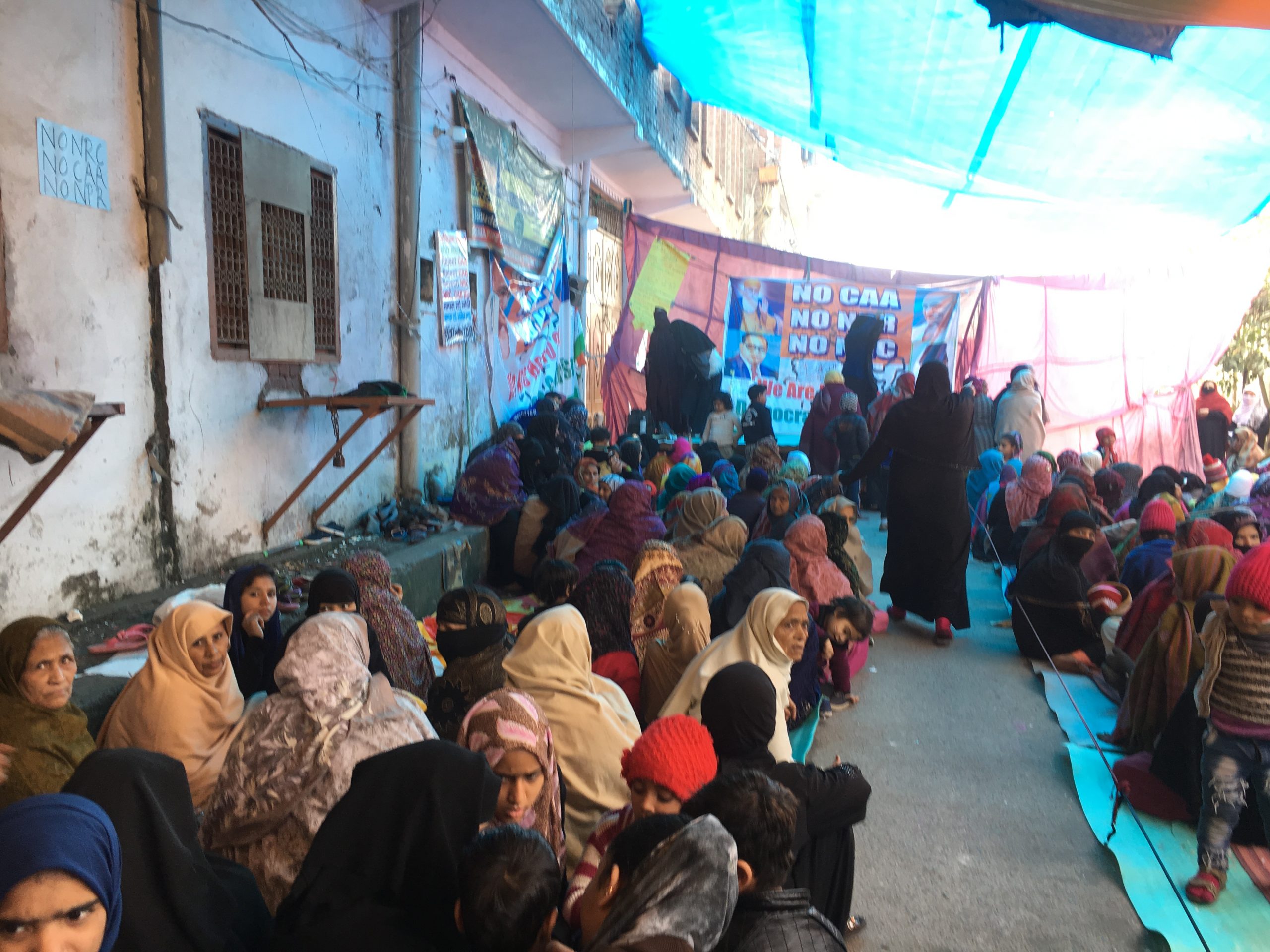I live in a quaint little place in the Himalayas. But having spent 30 years of my life in Delhi and NCR, the tranquility in the hills bothers me. I long to be moved, charged and shaken into a state of urgency. This time when I visited Delhi, I decided to join in the ongoing demonstrations and protests to get myself ready for the hills again. I hoped these sites would lend me the energy to carry on in these dark times.
On a Wednesday, I decided to venture into East Delhi and join the women sit-ins against CAA, NRC and NPR. Using information on Social Media, I noted down the location of all the protests and found out that five of them were going on in East Delhi. I decide to focus there as East Delhi is a dense area with higher female:male ratio (Did you know this? I didn’t till I did this preliminary research!) compared to other districts of Delhi.
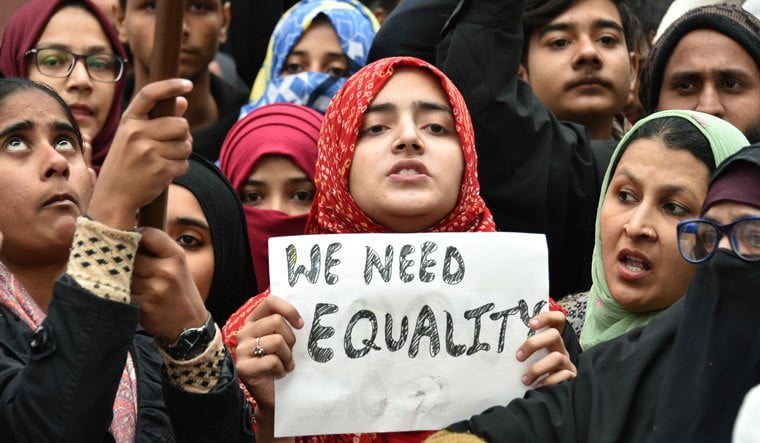
I decided to take a bus and the pink ‘ladies pass’ I was given the moment I boarded the bus was a delightful harbinger of the journey that was going to be all about women. As soon as the bus crossed Yamuna and touched Wazirabad, we crossed the first CAA protest site at Chandbagh. A tricoloured strip of cloth littered with pictures of Ambedkar and Azad, Faiz and Rahat Indori’s poetry fenced the site. From the bus through the slight gap under the fence, I spotted school kids sitting in neat rows and listening intently. A banner announcing langar by Sikhs was also put up.
Site 1: Brijpuri Puliya, Mustafabad
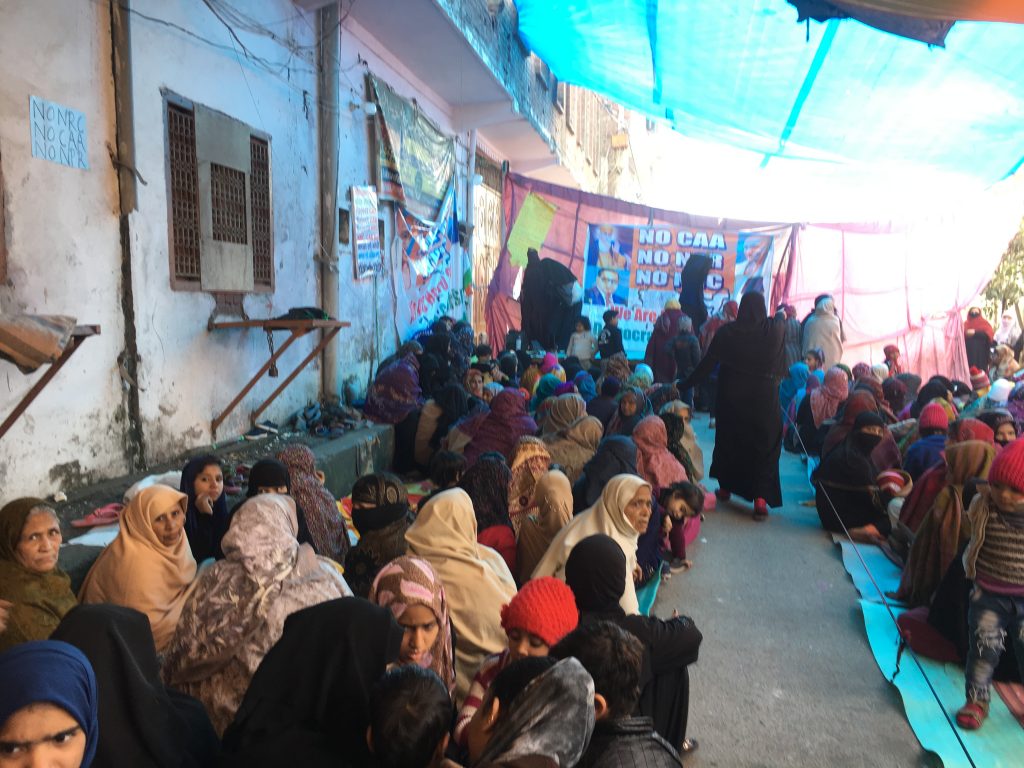
The scene at Brijpuri puliya, a CAA protest site set on a stretch of a rarely accessed road between Farukkhiya Jama Masjid and a government dumping ground connecting Brijpuri to Chandbagh, at 2 in the afternoon was spiritual. With women and children sitting-in holding placards against CAA facing the stage, which was adorned with a banner depicting Baba Saheb, Guru Nanak Dev, Gandhi and Maulana Azad.
Young men who stood guard outside the protest site were particular about ensuring that everyone takes off their shoes before entering. Outsiders were welcome, encouraged to come on stage and speak. Food was being prepared at the back. As soon as I entered the site, women turned their heads to have a better look at the new visitor. We exchanged smiles and they tried to place me.
“Aap kahan se?” (Where are you from?)
“Main Dilli se hi, aap ka saath dene aayi hun. De sakti hun na?” (I am from Delhi. I am here to stand by you. Can I stay?”
“Haan haan, yeh sanvidhan ko bachane ki ladai hai. Hum par maar zyada pad rahi hai, par ladai toh phir bhi sab ki hai?” (Yes, yes. This is an attempt to save the Constitution. Even though we are the ones getting the brunt of the state violence, but the fight is for everyone.)
Soon a woman got off the stage and asked if I wanted to come on the podium and say a few words. I politely declined. As I was exiting, a young man on scooter came to drop a woman and a girl at the protest site. It seemed everyone tacitly knew their role in this struggle to save the Constitution. On my way back to the main road, I encountered a row of about 40 personnel of Delhi police in their camouflage jackets approaching the CAA protest site. I got scared and walked back swiftly to the protest site to tell the men guarding the site about it. But they were calm, they didn’t flinch at the information I provided. I took a breath of relief and walked towards the next site.
Site 2: Kardampuri
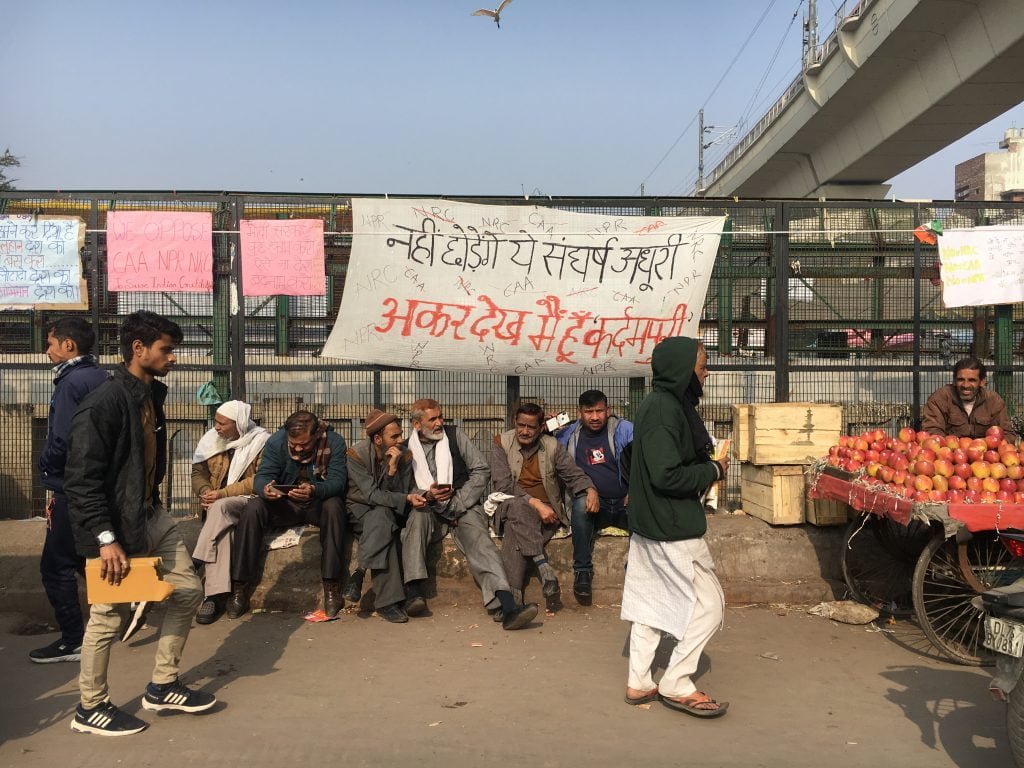
The fascinating feature was that the e-rickshaw and auto drivers would not know the names of these places but all of them knew about the protest. I asked my e-rickshaw driver about a protest site and he replied with a shy pride on his face, “Yahan toh sab jagah protest chal raha hai”, implying I had to be specific. As I started to rummage through the pages of my notebook to tell him the name of a site, he blurted ‘Kardampuri’. It clicked!
I asked my e-rickshaw driver about a protest site and he replied with a shy pride on his face, “Yahan toh sab jagah protest chal raha hai”, implying I had to be specific. As I started to rummage through the pages of my notebook to tell him the name of a site, he blurted ‘Kardampuri’. It clicked!
First, I asked him to take me there and then confirmed the name of the locality with my notebook. Set over Kardampuri drain, the CAA protest has been going on since January 18. The mood here was of fighting back. What struck me the most were the slogans especially created for Kardampuri. The protestors here were skeptical of ‘outsiders’ clicking them. Repeat announcements were being made of not letting any outsider click photos.
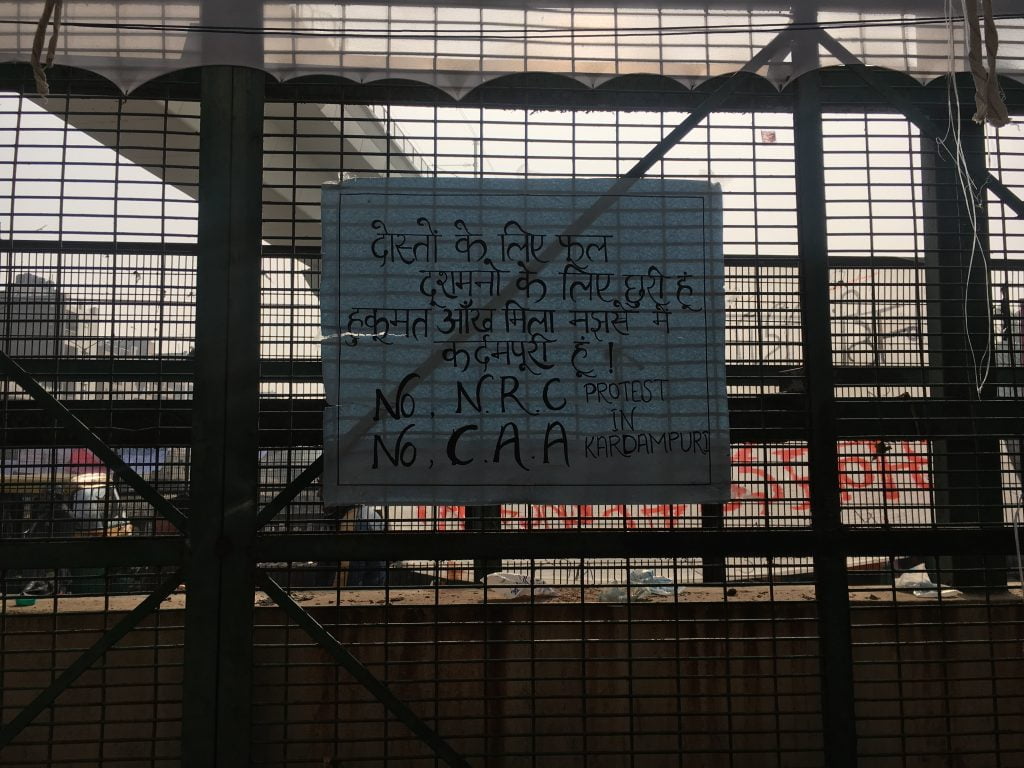
I was clicking some pictures of the protest posters when a woman named Zeenat started talking to me, “Hum toh chahte hain sabka bhala ho”. The tables installed next to the entry point to the site declared proudly, “No cash, no paytm”! While exiting, I noted that the entry was guarded by two teenage girls, both with beautiful smiles and piercing eyes.
Site 3: Seelampur-Jafrabad
Seelampur- Jafrabad protest site was set next to Al Taj Dawakhana in a service lane. The protest had a huge turnout with several of the protesting women and children coming up on the stage and sharing couplets inspiring the crowd. A woman with Savitribai Phule’s image in the backdrop asserted, “Hamari auratein Shaheen Bagh ki auraton se kam nahi hain,” and the crowd cheered in agreement. “Na tan chahiye, na dhan chahiye, mujhe bas aman se bhara vatan chahiye,” said a 4-5 year old girl on the mic.
The organisers, again women, were careful about the speakers not offending anyone with their speeches. If anybody said something on the mic that they thought could be misconstrued and used to present the protest in a bad light was interrupted. It led me to the discernible comparison between how being from a majority faith I don’t have to censure myself as much as these women.
Site 4: Khureji Khas
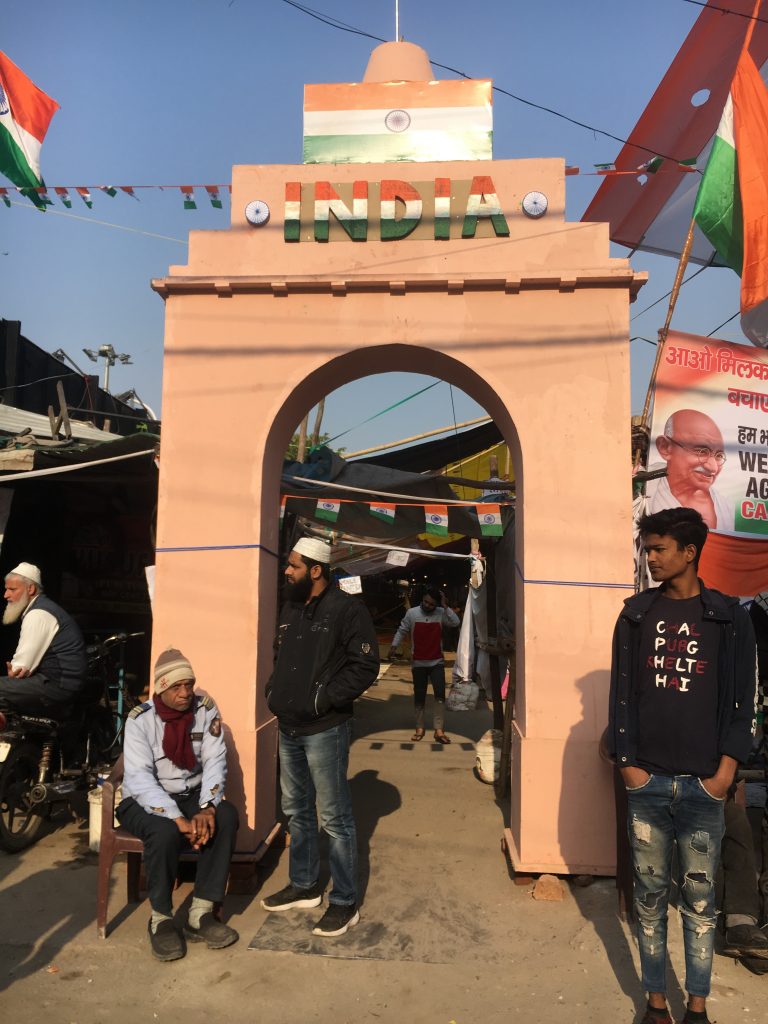
My next site was Khureji Khas. The CAA protest site was a vacant plot next to Khureji petrol pump. The canopy had separate entry for men and women and as I was about to enter from the women’s side, a Hindu woman did a security frisk on me.
Also read: Anti-CAA Protests: Finding Hope In The Age Of Fascism
The protesters here had complained that the local police had disconnected the electricity a few days ago and some men tried to plunder the site in the dark. That explained the security check at the gate. Inside, everybody was silent as a dua (prayer) was going on for kamyabi (success). Religious signs of all faiths adorned the walls of the tent. A college student later told me that Hindus from the locality were joining in with equal fervour.
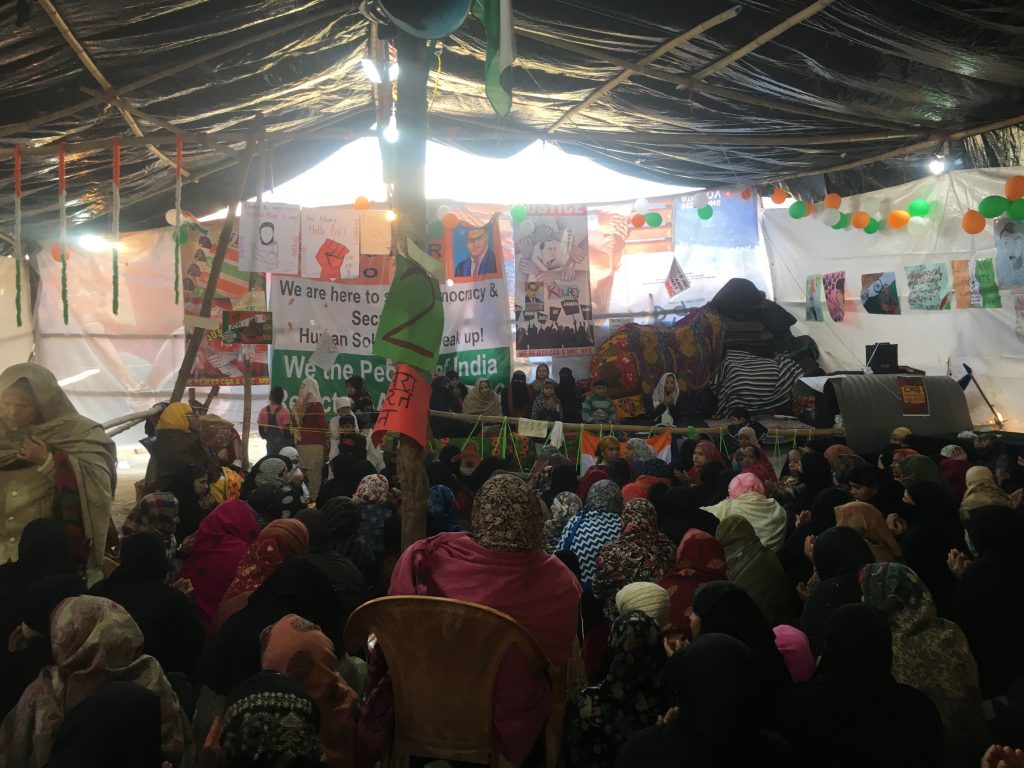
Site 5: Chand Bagh
Last on my list was Chand Bagh, the biggest CAA protest site set in a service lane next to Wazirabad main road. I reached the site at about 5 in the evening. It was bustling with women, children and teenage girls. From the stage a young boy was shouting slogans of ‘Azadi’ and the crowd was responding with enthusiasm. The site had about 800 protesters. The atmosphere felt festive and full of camaraderie. How these women had turned an obstacle, a barrier to their and their children’s safe future into an opportunity to celebrate our constitution marveled me.
Women Reviving The Symbols of Republic
These women’s acute sense of right and wrong, organisational skills and ability to lead was extraordinary. It reminded what Pratap Bhanu Mehta had said in an interview a few days ago, “Women, for a long time have been the silent force shaping the Indian politics.”

Also read: Women’s Agency In Shaheen Bagh And In Other Protests Against CAA
I took a bus back, was handed a pink pass, which I neatly folded and saved in my wallet. This was my souvenir of the day, the day when I witnessed women taking back the symbols of republic; rubbing them, polishing them, detoxifying them and reviving them to be steeped in meaning and value again.
Meenakshi is a policy researcher who loves to cook, eat and spoil her cat. You can find her on Twitter and Instagram.
